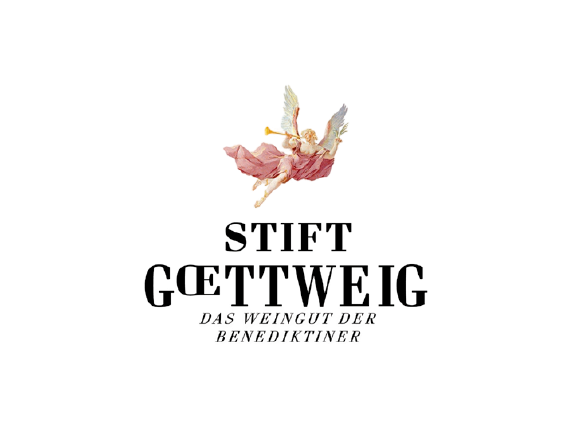....Unübersehbar thront das Benediktinerstift Göttweig in 422 m Seehöhe am östlichen Rand des weltberühmten Donautales der Wachau. Seit 2001 Weltkulturerbe ist es heute nicht nur Anziehungspunkt für Gäste aus aller Welt, sondern auch ein spirituelles Zentrum im Herzen Niederösterreichs, getragen von einer Gemeinschaft von ca. 45 Mönchen.
Das Kloster - aufgrund seiner großartigen Berglage auch das "Österreichische Montecassino" genannt - wurde 1083 als Kloster für eine Kanoniker-Gemeinschaft gegründet, die nach der Augustinus-Regel lebte. 1094 wurde Göttweig den » Benediktinern übergeben.
Heute sind von den mittelalterlichen Bauwerken Göttweigs nur noch Reste vorhanden (Erentrudiskapelle aus 1072, Alte Burg, Krypta und Chor der Kirche), da nach einer verheerenden Brandkatastrophe im Jahre 1718 der barocke Neubau des Stiftes notwendig wurde.
Der kaiserliche Hofarchitekt Johann Lucas von Hildebrandt lieferte die Pläne für den grandiosen Klosterbau, der 1720 unter Abt Gottfried Bessel begonnen wurde und zu zwei Drittel vollendet werden konnte.
Im Museum im Kaisertrakt erlebt der Besucher diese barocke Pracht, wie z. B. die monumentale Kaiserstiege mit dem Deckenfresko Paul Trogers aus 1739, die zu den schönsten und größten barocken Treppenhäusern Europas zählt.
In den angrenzenden Fürsten- und Kaiserzimmern zeigen die Kunstsammlungen des Stiftes jährliche Sonderausstellungen.
Auf dem Weg vom Stiftseingang an der Pforte-Reception in den Stiftshof begleitet den Gast die Dauerausstellung "Klosterleben", die über Leben und Arbeit der Göttweiger Mönche informiert.
Für das leibliche Wohl verwöhnt das Stiftsrestaurant Göttweig mit Spezialitäten aus der Region sowie mit Weinen aus den stiftseigenen Rieden. Die Aussichtsterrasse bietet einen weithin einmaligen » Panoramablick in das Donautal und die Wachau. ..Impossible to overlook, the Benedictine abbey Stift Göttweig sits enthroned at 422 metres above sea level at the eastern border of the Danube River region’s world famous Wachau Valley – since 2001 a UNESCO Cultural Landscape. Göttweig Abbey is not only a major point of attraction for visitors from all over the world, but also provides a spiritual centre in the heart of Niederösterreich (the state of Lower Austria), sustained by a brotherhood of some forty-five monks.
The monastery – frequently called the ‘Austrian Montecassino’ for its magnificent mountaintop setting – was founded in 1083 as a cloister housing a clerical community following the Rule of St Augustine. Then, in 1094, Stift Göttweig was given over to the Benedictine Order.
Today only remnants can be seen of Stift Göttweig’s medieval buildings (the Ernentrudi Chapel from 1072, the Old Castle, the Crypt & Choir of the church), after a catastrophic fire in the year 1718 necessitated extensive reconstruction of the abbey – in baroque style.
Imperial Court architect Johann Lucas von Hildebrandt drafted the plans for the magnificent abbey complex, which was begun in 1720 under Abbot Gottfried Bessel and was left two-thirds completed.
Today a visitor can experience this baroque grandeur in the museum of the Imperial Wing – for example in the monumental Imperial staircase, with its magnificent ceiling fresco painted in 1739 by Paul Trogers; this is one of the most beautiful and grandest baroque stairways in all of Europe.
Every year the abbey presents special exhibitions from their fine art collection, in the adjoining Regency Room and Imperial Chamber.
On the way from the abbey’s entrance at the reception portal to the courtyard, the visitor is accompanied by the permanent exhibition ‘Monastery Life’, which informs sightseers about the life and work of the Göttweig Abbey monks.
And for corporeal wellbeing, the abbey’s restaurant Stiftsrestaurant Göttweig
pampers the visitor with regional culinary specialties, as well as wines harvested from the abbey’s own vineyards. The observation deck offers a far-reaching and unrivalled panorama of the Danube River Valley and the Wachau. ....

